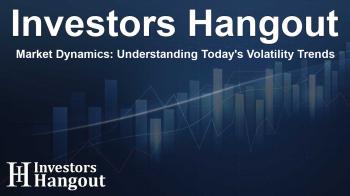Market Dynamics: Understanding Today's Volatility Trends

Volatility: A Key Player in Market Structures
Volatility across major asset classes stands at notably low levels right now. Once considered just a broad measure of risk, its significance has transformed considerably in recent years. Today, volatility is not merely a conceptual tool; it has embedded itself as a crucial element of market structure, acting as a tradable asset that can influence everything from how portfolios are constructed to how assets are priced.
In modern financial strategies, volatility serves as a vital component. Quantitative approaches increasingly depend on it as a foundational element, while a variety of products, ranging from standard ETFs to complex options, are tailored specifically to track and speculate on its fluctuations. Consequently, when volatility reaches notable extremes, it does more than mirror market sentiment; it plays a proactive role in shaping it. These alterations can profoundly affect asset classes, liquidity conditions, and overall investor behavior.
Recent Trends Indicating a Volatility Shift
After an unprecedented surge in volatility prompted by recent economic announcements and the subsequent uncertainty, markets have experienced a significant realignment. Over the last few months, volatility has not just decreased; it has essentially diminished to historic lows.
An example is the ICE BofA MOVE Index, which gauges bond market volatility and recently dropped to its lowest point in over three years. In the realm of foreign exchanges, the Deutsche Bank Currency Volatility Indicator (CVIX Index)—which assesses volatility of significant currencies—has also seen reductions, reaching its lowest mark in nearly a year. Similarly, equities are reflecting this trend, as one-month realized volatility in various indices has fallen to levels that haven't been seen since last summer.
Bond Market Volatility: Historical Perspective
The significant downturn in volatility is remarkable given that volatility typically displays mean-reverting properties. Periods of steady calm are often succeeded by abrupt reversals, and conversely, heightened volatility can repeat itself. Investors frequently misinterpret current lull conditions, projecting them too far into the future—believing that tranquil markets will remain stable or that chaotic ones will stay unpredictable. This mindset can lead to vulnerabilities in the market, especially when investor complacency kicks in.
Historical evidence supports this pattern. When volatility is low, investors tend to embrace more risk, reduce their hedges, and reach for higher yields—all based on the assumption that serenity will last. However, when volatility makes a return, it often does so unexpectedly, catching many off guard and leading to swift market adjustments.
Preparing for Potential Volatility Increases
As volatility levels currently sit low and we approach the traditionally uncertain months from August to October, investors need to be on alert for a potential resurgence of volatility. Predicting the specific catalyst for renewed volatility is quite challenging. Possible triggers could arise from geopolitical events, surprise economic factors, policy changes, or even unforeseen technical conditions within the market. Regardless of the source, the present conditions are conducive to sudden shifts: low volatility, stretched investor positioning, and a season with a history of delivering unexpected events.
Frequently Asked Questions
What does low volatility mean for investors?
Low volatility indicates less price fluctuation in markets, which can encourage risk-taking among investors. However, it can also precede sudden shifts.
How does volatility impact trading strategies?
Traders often use volatility to gauge risks and inform their strategies. Lower volatility can lead to increased leverage and risk-taking, while higher volatility may lead to more cautious approaches.
Are there indicators for predicting volatility?
Various financial indicators, such as the VIX or the ICE BofA MOVE Index, can be analyzed to assess market volatility and investor sentiment.
What factors can trigger increased volatility?
Increased volatility can stem from unexpected geopolitical events, macroeconomic reports, or changes in market sentiment due to technical disruptions.
Why is August to October historically a volatile period?
This timeframe has typically been associated with market uncertainty due to various economic reports, seasonal trading patterns, and historical events.
About The Author
Contact Hannah Lewis privately here. Or send an email with ATTN: Hannah Lewis as the subject to contact@investorshangout.com.
About Investors Hangout
Investors Hangout is a leading online stock forum for financial discussion and learning, offering a wide range of free tools and resources. It draws in traders of all levels, who exchange market knowledge, investigate trading tactics, and keep an eye on industry developments in real time. Featuring financial articles, stock message boards, quotes, charts, company profiles, and live news updates. Through cooperative learning and a wealth of informational resources, it helps users from novices creating their first portfolios to experts honing their techniques. Join Investors Hangout today: https://investorshangout.com/
The content of this article is based on factual, publicly available information and does not represent legal, financial, or investment advice. Investors Hangout does not offer financial advice, and the author is not a licensed financial advisor. Consult a qualified advisor before making any financial or investment decisions based on this article. This article should not be considered advice to purchase, sell, or hold any securities or other investments. If any of the material provided here is inaccurate, please contact us for corrections.

